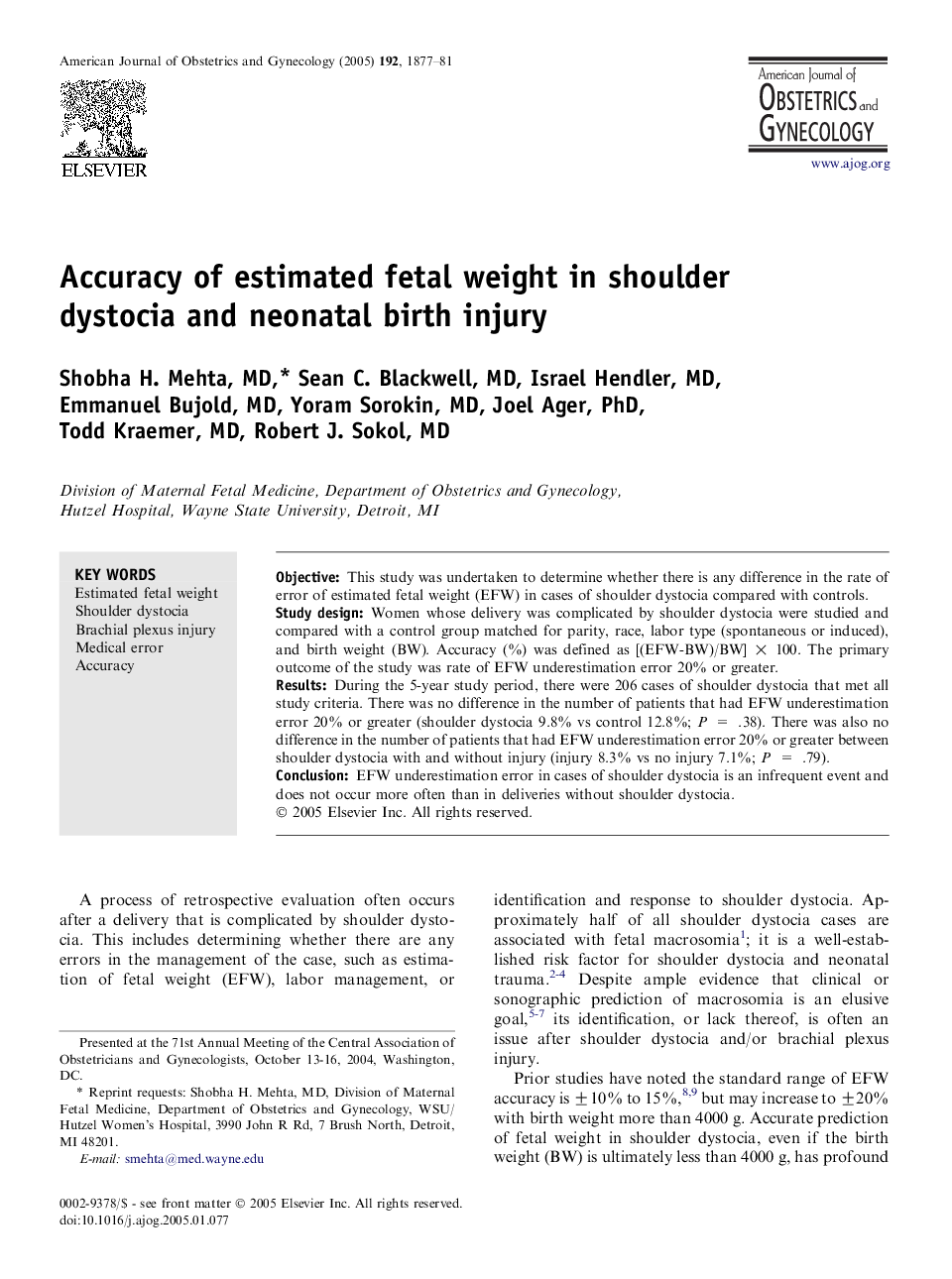| Article ID | Journal | Published Year | Pages | File Type |
|---|---|---|---|---|
| 3442896 | American Journal of Obstetrics and Gynecology | 2005 | 4 Pages |
ObjectiveThis study was undertaken to determine whether there is any difference in the rate of error of estimated fetal weight (EFW) in cases of shoulder dystocia compared with controls.Study designWomen whose delivery was complicated by shoulder dystocia were studied and compared with a control group matched for parity, race, labor type (spontaneous or induced), and birth weight (BW). Accuracy (%) was defined as [(EFW-BW)/BW] × 100. The primary outcome of the study was rate of EFW underestimation error 20% or greater.ResultsDuring the 5-year study period, there were 206 cases of shoulder dystocia that met all study criteria. There was no difference in the number of patients that had EFW underestimation error 20% or greater (shoulder dystocia 9.8% vs control 12.8%; P = .38). There was also no difference in the number of patients that had EFW underestimation error 20% or greater between shoulder dystocia with and without injury (injury 8.3% vs no injury 7.1%; P = .79).ConclusionEFW underestimation error in cases of shoulder dystocia is an infrequent event and does not occur more often than in deliveries without shoulder dystocia.
